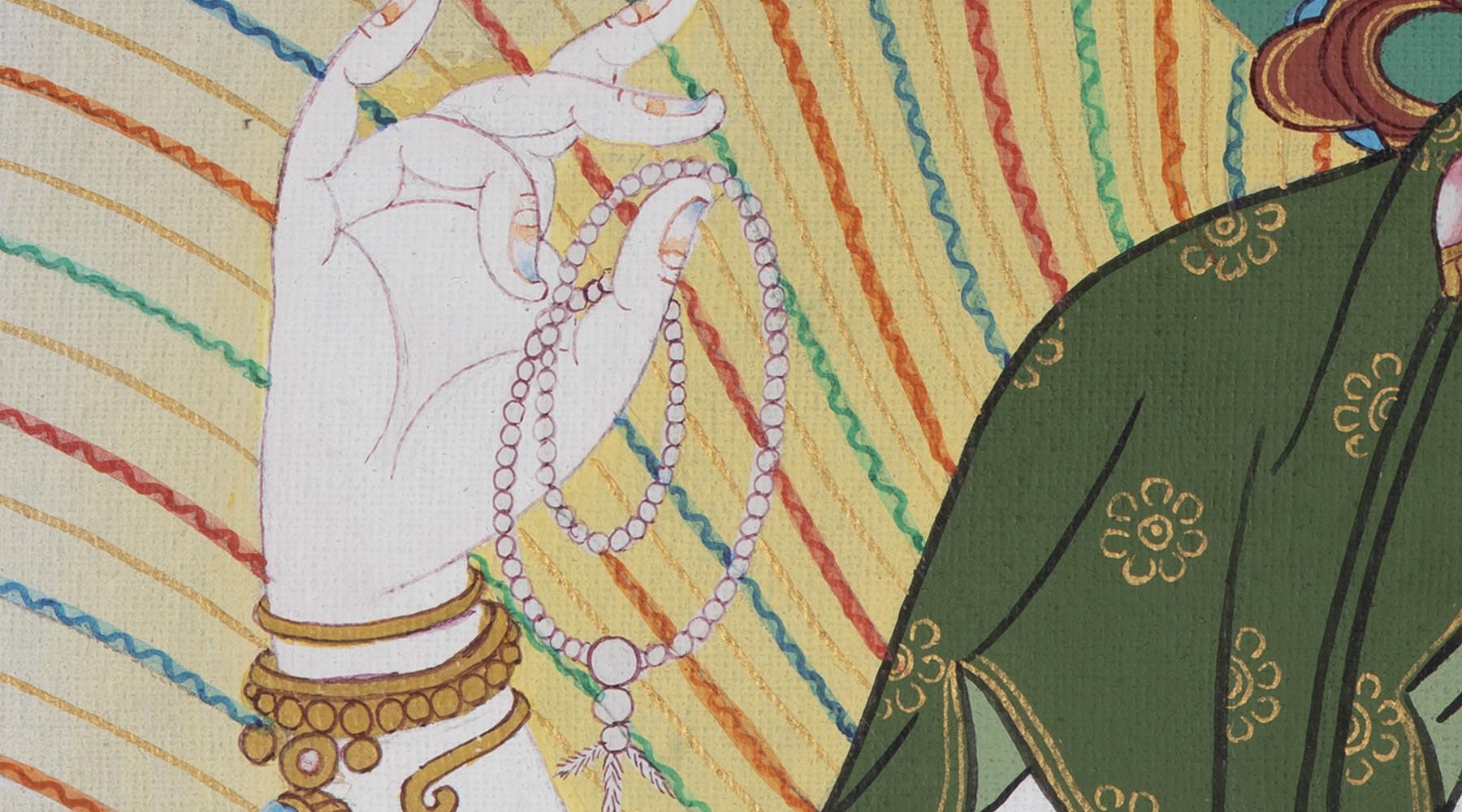Associations To the 108 Beads
The traditional Buddhist rosary beads or mala has 108 even-sized beads. It is used for mantra recitation. Buddhism is preceded by the sacred number of 108, with it being the classical number of the Hindu names assigned to a deity or God. It represents the nine planets in the twelve zodiac houses, as it is a multiple of twelve and nine. It also represents the four quarters of the moon in each of the twenty-seven lunar mansions or constellations.
It is because it is also a multiple of twenty-seven and four. Nine is also considered a 'magic' number. If a number is multiplied by nine, it results in a certain number. The sum of the digits of that particular number is also a multiple of nine. It is calculated that a human being takes 21,600 breaths in a twenty-four-hour cycle in Pranayana Yoga. It consists of sixty periods of 360 breaths. And in a five-hour 'day' cycle, it equals 10,800 breaths. The recitations of at least a hundred mantras to be completed in a full rosary turning are ensured by the 108 beads.
Specific Beads for Enlightened Activities
To accomplish the four karmas or enlightened activities, mantras are recited. They are; pacifying, enriching, magnetizing, and destroying. Various numbers of beads are specified. However, most practicing Buddhists use a mala of 108 beads invariably. The beads should be made of crystal, pearl, mother of pearl, white lotus seed, moonstone, conch shell, or ivory.
The beads should be clear or white. They should number to one hundred or 108. The enriching rites of increase use the 108 beads of bodhi seed, lotus seed, gold, silver, bronze, or copper. The magnetizing rites of attracting or drawing power into one's sphere of personal influence uses certain beads. They should be made of red coral, carnelian, red sandalwood, or saffron-scented redwood. They should number twenty-five.
What Are the Beads Made Of?
Some beads are made from rudraksha seeds, human or animal bone, iron, or lead, and should number sixty. They are used in the wrathful rites of destructive or forceful activity. 1,008, 108, one hundred, sixty, fifty-four, forty-two, twenty-seven, twenty-five, and twenty-one are the alternative numbers of beads for various practices. Beads made from red coral and carnelian are especially prized for the practice of Vajrayogini.
Beads made from lapis lazuli are auspicious for the Medicine Buddha practice. Beads made from amber, ruby, turquoise, amethyst, beryl, tiger's eye, onyx, rose quartz, and rock crystal is now popular. But traditionally bodhi seed and red sandalwood are considered to be auspicious for all practices. Only accomplished yogins should use human and animal-bone malas. Because karmic influences are believed to be innate in ritual objects made of bone.

The Susiddhi Tantra
There is an early Buddhist text known as the Susiddhi Tantra. It is based on the early Vajrayana concept of only Three Buddha Families. It states that to increase rites of the Lotus Family lineage, lotus-seed beads should be used. For wrathful rites of the Vajra Family lineage, rudraksha seeds should be used. For pacifying rites of the Buddha Family lineage, seeds of a wild plant should be used. It is named Putranjiva. These small seeds are worn as necklaces by children in India to protect their life force and health. Mala seeds were consecrated by cleansing in a mixture of the five products. They were derived from an orange-colored cow; milk, butter, yogurt, urine, and dung.
Symbolic Representations
The threads strung through a mala represent the continuity of the buddhadharma. They pierce the 108 worldly passions. Traditionally, the thread is wound from three or nine individual strands. It should be spun by a young virgin girl belonging to the tantric lineage of the specific Buddha Family. Three strands represent the Three Jewels of Buddha, dharma, and sangha.
Nine strands symbolize Vajradhara and the eight bodhisattvas. A single strand should not be used, in case of sudden breakage. A typical Tibetan mala will consist of 108 beads on a triple-strand thread. It has different color beads at the twenty-seven, fifty-four, and eighty-one bead points. It divides the mala into four equal sections. Colored beads may also be placed at the ten and twenty-one points for mantra counting.
Attributes of the Beads
Attached to the mala are two tasseled counter strings. Each is threaded with ten small ring beads made of metal- usually silver, gold, or bronze. It is sealed at their separate ends with a small metal vajra and bell. These small counters are strung on a double plaited cord. They are used for counting the hundreds of complete rosary recitation cycles. A third counter for the thousands may also be used; this is commonly sealed with the symbol of a wheel or jewel.
Its thread loop may be moved from bead to bead along with the mala. It counts the tens of thousands of mantra recitations performed. The mala is turned around on completion of a full cycle of 108 mantra recitations. And the next mantra cycle is counted in reverse along with the beads. The 'guru' beads at the end of a rosary have one round and the other cylindrical. They symbolize wisdom which cognizes emptiness and emptiness itself. The enlightenment stupa of the Buddha is symbolized by the shape of the two beads.
Source: The Encyclopedia of Tibetan Symbols and Motifs, Robert Beer

